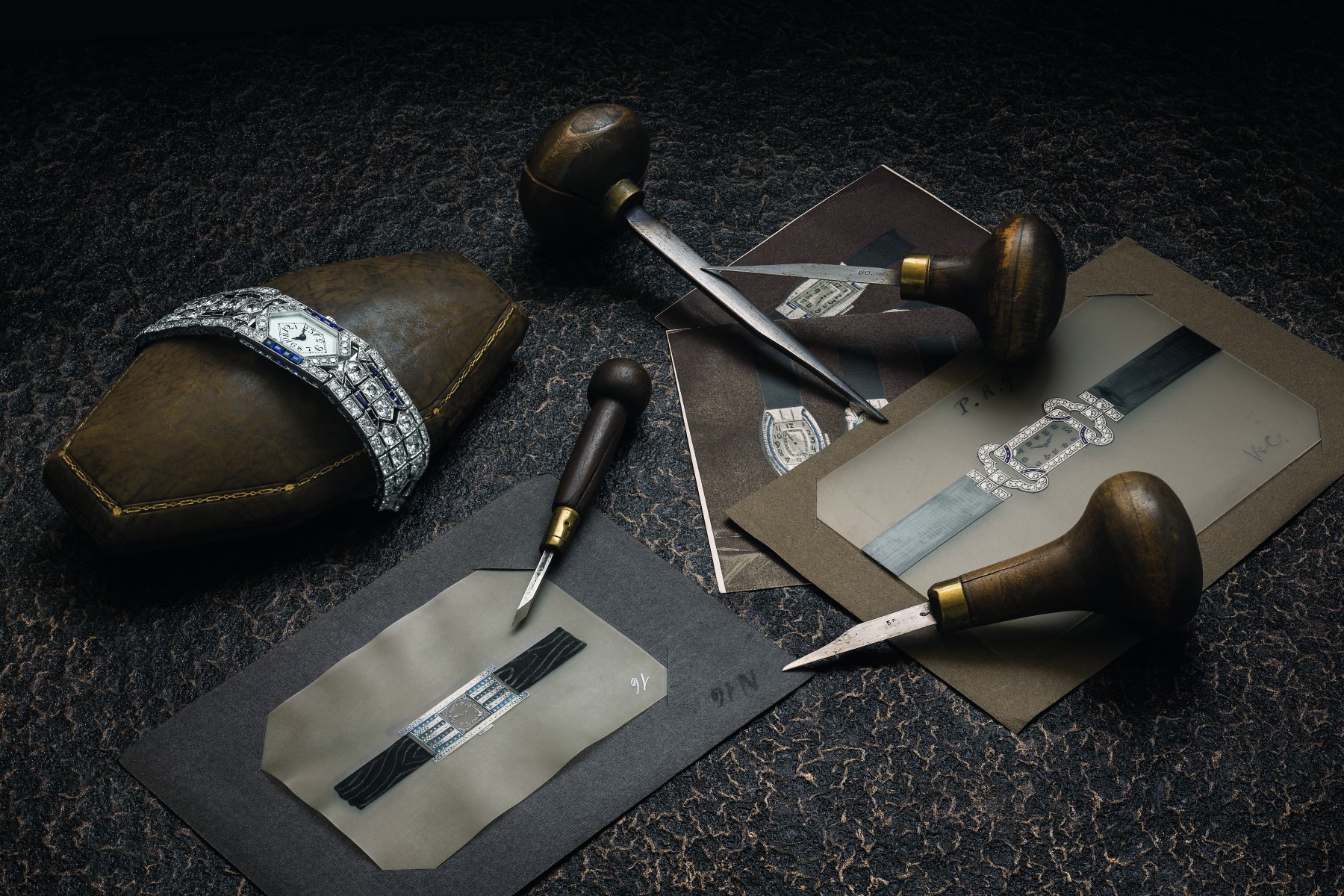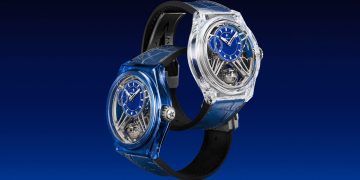Source: Images and content by Vacheron Constantin
http://content.presspage.com/uploads/1999/500_vac-gemsetting-mo-3-copyright-bruno-ehrs.jpg?10000
- Artistic crafts are grouped together at the heart of the Manufacture, in the Métiers d’Art workshop where engravers, gemsetters, guillocheurs and enamellers work hand in hand with the design studio. These free and passionate exchanges give rise to excellence.
- For nearly three centuries, Vacheron Constantin has remained faithful to its traditional artistic crafts, developing them and perpetuating its creativity and openness to the world.
- In addition to its signature style, Vacheron Constantin has since its founding in 1755 played on the perfectly integrated combination of watchmaking mastery and the decorative expertise of artistic crafts. Perpetuating this dual know-how is a rare phenomenon in the world of Haute Horlogerie.
- The Maison is distinguished by unique artistic and artisanal expression that transcends styles. In its workshops, artisans are artists, and vice versa. They embody Vacheron Constantin’s humanistic and cultural vocation.
“A Vacheron Constantin watch cannot be technical without being precious.”
It was over 267 years ago and it seems like yesterday. Vacheron Constantin was born in the watchmaking Geneva of the Age of Enlightenment, a time when a beautiful watch was as much a matter of mechanical science as of artistic creation.
“Since its birth, the Manufacture has endeavoured to follow the principles of this philosophy, which is simple to enunciate yet complex to implement: a Vacheron Constantin watch cannot be technical without being precious”, says Louis Ferla, CEO of the Maison. This is probably the first thing that characterises the singularity of a Vacheron Constantin watch. Overall harmony. Natural elegance. A different approach to Haute Horlogerie. In this spirit, the artisans of the Manufacture are driven by a humility and desire for transmission. They are engravers, enamellers, guillocheurs, gemsetters or watchmakers and possess a rare talent that they pass on to each other like a relay race, exchanging ideas on a daily basis so as to always do better, in complete freedom. The final result depends on the work and creativity of each individual. Their perfect technical mastery and constant dialogue give rise to watches embodying this quest for excellence. These artisans are the heart and soul of the Maison.
Since its founding in 1755, Vacheron Constantin has cultivated, perpetuated and constantly evolved its know-how. This tradition of innovation has never been interrupted. All decorations are applied by hand, with a multitude of tools designed by the artisans themselves or on complex ancient machines that they continue to maintain in operation. Faithful to its values of humanism and openness to the world, the Maison develops rare skills in engraving, guilloché, enamelling and gemsetting, perpetually seeking new ideas and innovative techniques yet remaining faithful to this age-old tradition of ornamentation.
History has indeed shaped the Maison: once settled in Geneva in 1541, Jean Calvin set about banning jewellery and ornamental objects that were regarded as manifestations of luxury, thereby forcing goldsmiths to turn to watchmaking. This conversion marked the beginning of an exceptional boom in Geneva watchmaking, from which the Manufacture emerged. At the beginning of the 18th century, one fifth of the citizens of Geneva made up what Diderot and d’Alembert referred to in their Encyclopaedia as La Fabrique: a corporation of more than 5,000 watchmakers, goldsmiths, jewellers and artisans forming a fertile environment.
“This ability to integrate, transpose and interpret elements from other horizons without ever losing the stylistic identity of Vacheron Constantin is unparalleled.”
It is this “manual intelligence” that Vacheron Constantin has nurtured over the years. Its dedicated to artisanal creativity goes hand in hand with its quest for innovation. The Métiers d’Art collection and the unique Les Cabinotiers timepieces, which benefit from various art techniques and uncommon watchmaking expertise, are living proof of this. Within the Manufacture, each artisan masters their art and reinterprets it. The invention of guilloché in figurative mode, of the flame cut in gemsetting as well as research into grisaille enamel are exclusive creations by Vacheron Constantin. These artistic and technical innovations open up new creative territories and immense exploratory fields for watchmakers.
The artistic crafts also express the openness to the world of the Maison, whose decorative creations draw on influences from other cultures. “This ability to integrate, transpose and interpret elements from other horizons without ever losing Vacheron Constantin’s stylistic identity is unparalleled”, explains Christian Selmoni, Style and Heritage Director. For more than two and a half centuries, the Manufacture has taken pains to cultivate and perpetuate its know-how, not only within the company but also with talented independent artisans. This is the case, for example, with the Métiers d’Art Villes Lumières watches, born of the collaboration between the Maison’s master enameller and a Japanese calligrapher who applied precious powders to the Grand Feu enamelled dial. Another example is the Métiers d’Art series dedicated to the Great Civilizations of the Louvre Museum, created in close collaboration with artisans who are experts in the techniques of micro-mosaic and stone marquetry.
In Vacheron Constantin’s workshops, the boundary between artisans and artists is not merely tenuous; it entirely vanishes when necessary, unbound by rules and in complete harmony. The immense technical knowledge of the artisans nurtures the freedom of their creations in terms of creativity and intuition. This daring, rare in fine watchmaking, enriches their technical mastery. Some exceptional Les Cabinotiers or Métiers d’Art timepieces are thus born from a proposal by an artisan. This humanist vocation, relating to both culture and travel is no coincidence; it is a sign of the intelligence of an enduring identity, the embodiment of manual intelligence.
In Vacheron Constantin’s workshops, the boundary between artisans and artists is not merely tenuous; it entirely vanishes when necessary, unbound by rules and in complete harmony.








